Tokyo is a concrete jungle. It’s a bustling centre, much like all the other major cities of the world. Packed peak-hour trains, sizzling asphalt, the rush of commercialism — one would be hard-pressed to call it a place for nature lovers.
Despite this lack of green in the city, it is still surprisingly easy to view one of nature’s wonders in the early summertime around late May to June. One would often associate fireflies with slow streams and thick forestry, but it is very much possible to catch these beautiful creatures at a few events in and around Tokyo.
Before we move on to this list, it is important to note that these events showcase both cultivated and wild fireflies. So make sure to figure out which type of event you would prefer to go to.
First, a note on videography and photography
You will notice that most firefly events have strict rules against photography and videography, and for good reason. Fireflies glow to attract potential mates, and the flashes and harsh light from digital devices would confuse them. According to some sites, excessive lights have lead to the depletion of firefly communities, and in order to conserve them for future generations, it would be advisable to not take videos or photos.
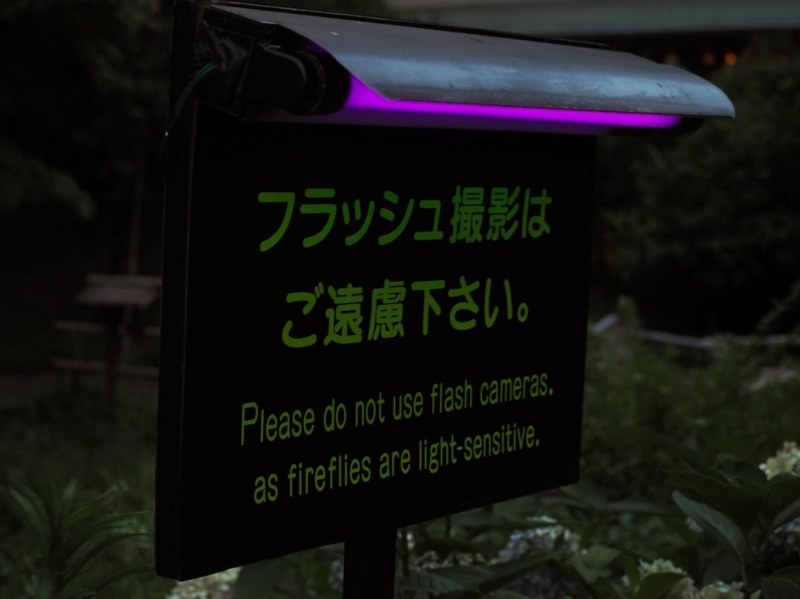
You’ll see signages like these in most parks that offer firefly watching.
Of course, we’ve all seen amazing photos of streams and woods filled with lots of fireflies. These, however, are often not taken in organised events like the ones below but in places rarely frequented by people. Most photos are also created from the compositing of several similar photos or through a long exposure shot — something not possible at any event crowded with viewers.
On another note, if you’d still wish to attempt to take photos or videos (mind you, capturing the small glow of fireflies in the dark isn’t as easy as you would think), make sure to turn off the red-light (auto-focus light) and flash of your camera and phones. If possible, reduce the brightness of your gadgets’ screens, too. It would actually be best if you adjust it to the lowest brightness setting. But you should still be able to see what you’re doing in the dark. Lastly, and I’ll just say it again for added stress, absolutely no flash photography at any given time.
1. Fussa Firefly Festival (Cultivated)

A lively matsuri accompanies the firefly viewing.
A little way out of the city centre is the rather well-known Fussa Firefly Festival. As its name implies, it’s held in the city of Fussa, which is approximately an hour away from Tokyo proper. Here, hundreds of fireflies are cultivated before being released into the park.
Accompanying the event is a sizeable matsuri, just a few minutes’ walk away. Here you can get the usual food fare, take part in carnival games, and watch performances, so you’ll be able to knock two things off your bucket list at this event. There’s even a small area to learn about the bugs and view some specimens. Note, though, that this mini talk will be in the Japanese language.

Drawings of fireflies done by youths of the community.
While you’re guaranteed of a firefly sighting if you arrive early before the bugs disperse from the area, be warned that this is a rather popular event. It’s going to gather quite a crowd. Don’t expect to be able to set up a tripod and snap a few good shots before the crowd dissipates.
2. Seikinen Garden Firefly Night, Yokohama (Wild)
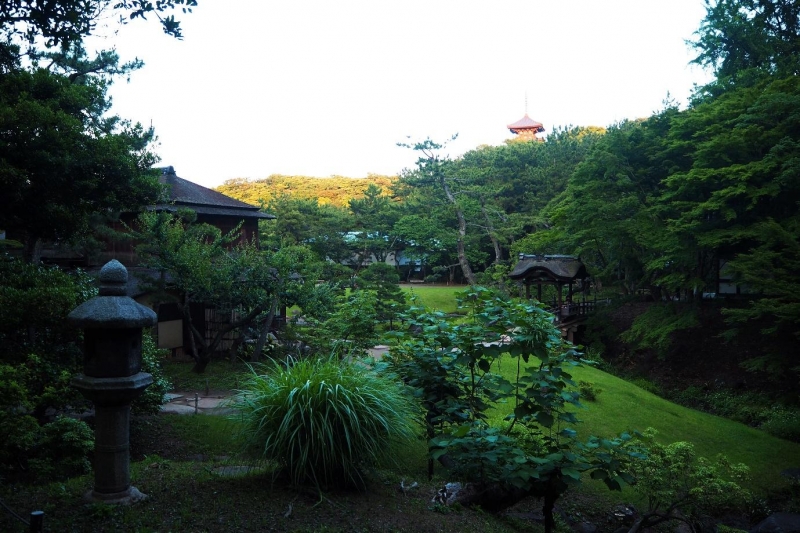
The rustic atmosphere of the garden makes it perfect for a peaceful walk.
This iconic park in neighbouring city Yokohama is pretty enough on a regular day, but seeing wild fireflies light it up and zip around in the dark makes it all the more breathtaking. Entering costs a slightly above average fee of 700 yen. But if you arrive in the late afternoon, you’ll have enough time to view the interesting collection of architectural artefacts from different parts of Japan before heading over to the firefly viewing area. Crowds here aren’t devastatingly big, though a walk further down the path can get you a nice viewing spot on the other side of the streams, which is less crowded.
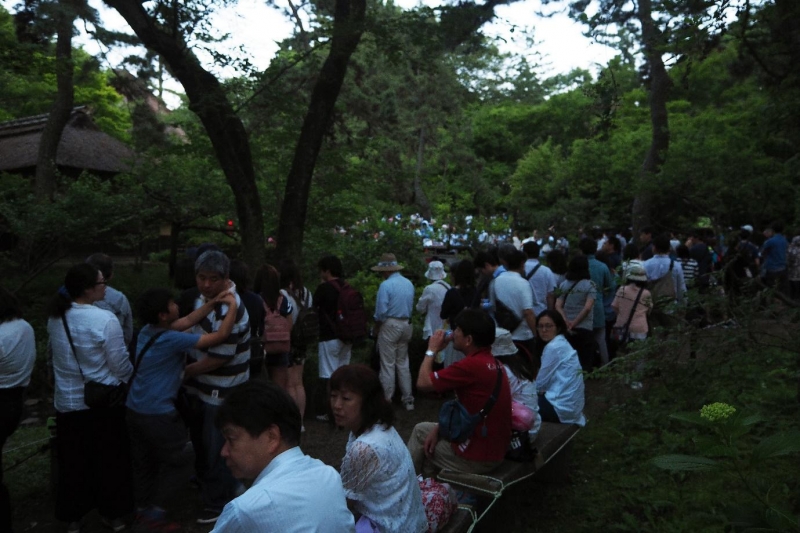
The crowd waiting by the stream to catch sight of the fireflies once it turns dark.
When you’re done marvelling at the luminescent critters, there’s a nearby house where you can view videos about the life cycle of the firefly. As you stand in line to get in, you’ll also get a chance to have a closer look at some fireflies passed around in small fish tanks.
Take note, though, that the park has a very strict policy against taking photos or videos of the bugs.
3. Hotel Chinzanso Firefly Fantasy (Wild)
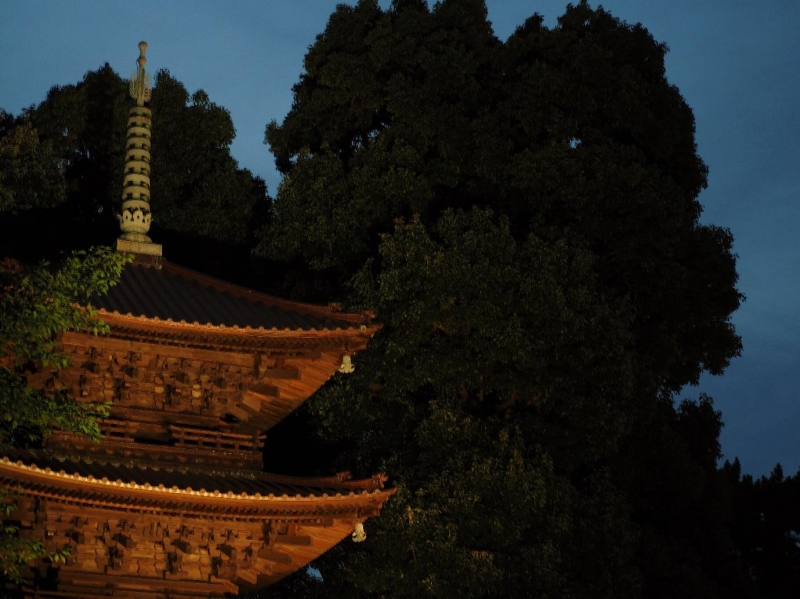
The garden is big enough to house its own pagoda.
Hotel Chinzanso is a little out of the way from the usual sightseeing spots, but it boasts of a sizeable garden that’s not only pleasant to have a stroll in, but also hosts a stream that’s an optimal breeding ground for fireflies. Follow the signs illuminated by black light to make your way to the pathways that run some distance above the Firefly River. There, you’ll be able to spot tiny dots of light moving in the dark.
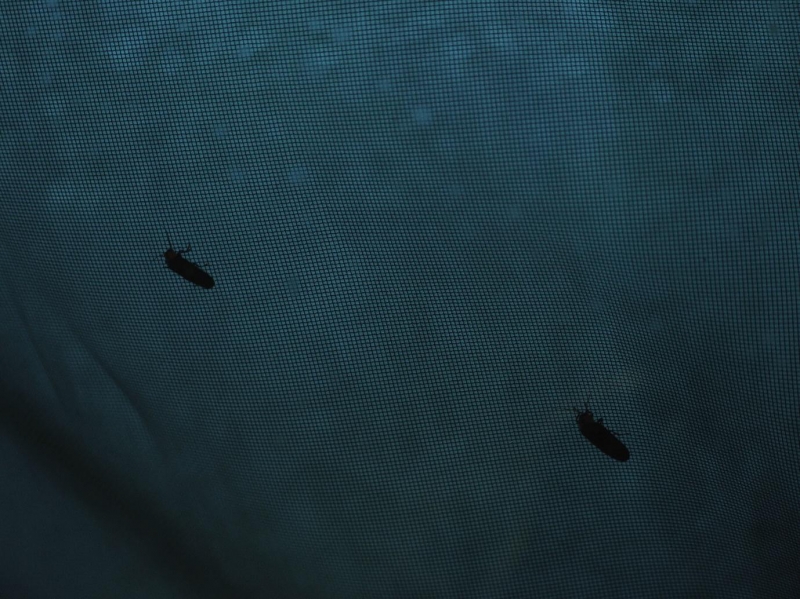
The viewing gallery allows visitors to observe fireflies even before it gets dark.
The hotel also has a viewing gallery a short distance away behind the waterfall where you’ll be able to get up close with captive fireflies. If you arrive before sundown, it’s possible to see the bugs as they are in the day.
The event is open to the public, and you can make your way to the garden by walking through the hotel lobby, or by walking along the Kanda River from Edogawabashi.
4. Shibuya’s Firefly Evening (Hotaru no Yube) (Cultivated)
No one would probably believe you if you told them that you can see fireflies right smack in the city. Yet Fureai Garden, Japan’s smallest garden, offers you just that. Housed in a small unsuspecting building about a kilometre walk from Shibuya Station, the only sign that’ll tell you about the event are the firefly cutouts decorating the front entrance.

This small building houses an indoor garden.
Unlike the other events mentioned previously, this firefly watching activity is more of a walkthrough. You’ll join the queue after paying a 100-yen entrance fee. A flight of stairs then leads the line into an indoor garden, which has been deliberately made dark for the fireflies. The walkthrough is a one-way passage which takes you through the garden, where several cultivated fireflies have been released. Although not a place where you can take your time to appreciate the bugs, this event is probably the most convenient to get to if you’re in the city. It also guarantees you a sighting of the glowing critters.
But do note: The garden holds a strict no photography, no videography policy.
5. Neighbourhood firefly events
If you happen to be living in a residential area of Tokyo during the firefly season, you may be fortunate enough to come across a firefly viewing activity organised by the community. These can also be jointly held with a small festival, allowing you to grab some yatai food before viewing the fireflies. The size of the event, as well as whether the fireflies are wild or cultivated, would depend on each neighbourhood.
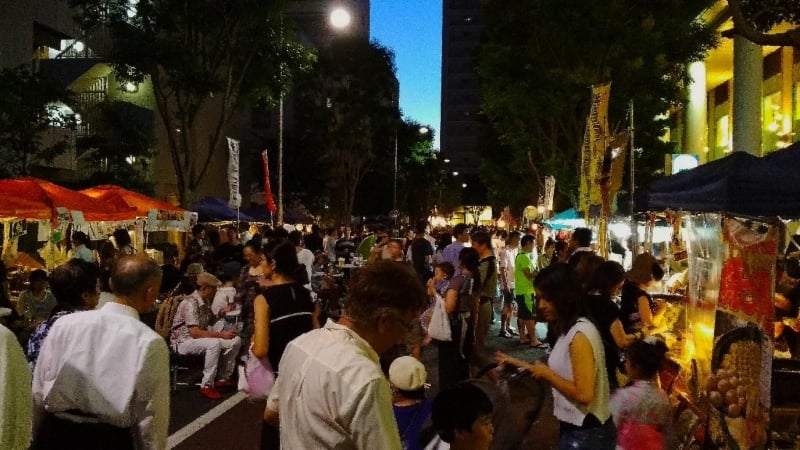
The bustling street at the Amanogawa Firefly Festival lined up with yatai or food stalls.
I was fortunate enough to visit the Amanogawa Firefly Festival at Shirokane, a town near where I was staying. A whole street near Shirokane Plaza was cordoned off for several yatai to sell food, which had attracted quite a crowd of locals and foreigners.
The firefly viewing area was situated behind the plaza, where a makeshift tent had been set up. Entrance to the viewing area was free, although I had to present my ticket, which was given to me earlier while in line.
The fireflies were housed in two clear boxes, which viewers could see up close. The good thing about neighbourhood events is that the crowd would definitely be smaller. However, the viewing time was short; we had to exit the tent after five minutes. This was not a problem, though. I managed to join the short queue again for a second viewing.
Despite being the ultra-modern capital of Japan, Tokyo does hold its own little surprises of nature. Visiting one of these firefly watching events can definitely help you escape the hubbub and stress of city life and transport you to a simpler time — even if it’s only for a little while.
Also read: Tokyo Rush Hour: 9 Tips to Help You Survive Your Train Ride




